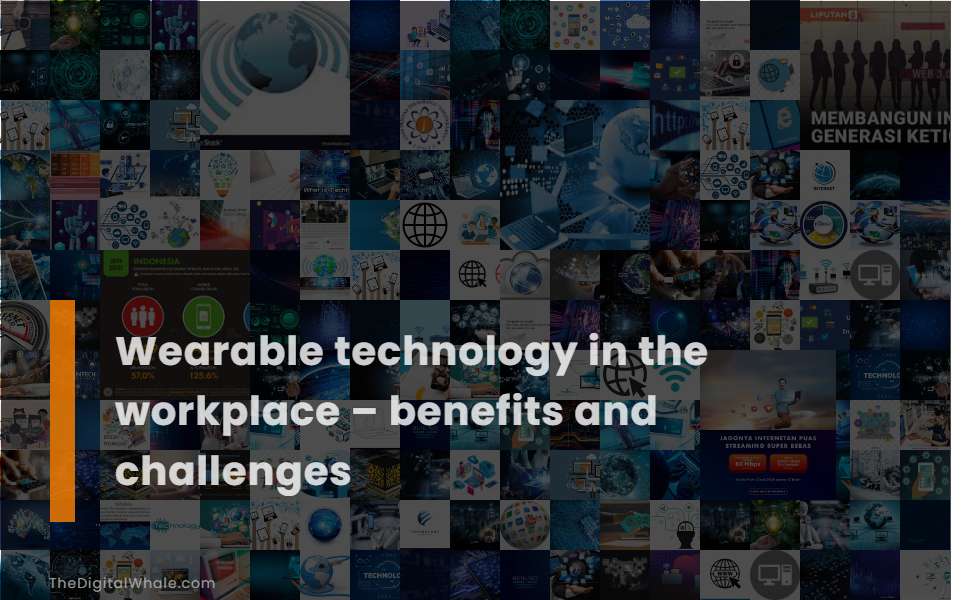Wearable Technology In the Workplace - Benefits and Challenges
What are the advantages and challenges of using wearable technologies in the workplace? What are the advantages of wearable technology in banking? Let's find out more about Wearable Technology In the Workplace - Benefits and Challenges.

Increased Productivity: Streamlines routine operations and improves task management.
Incorporating wearable technology in the workplace significantly boosts productivity by streamlining routine operations, optimizing workflows, and improving task management. These devices offer features like task tracking, time management, and stress reduction techniques, which enhance focus and overall work output. By automating routine tasks and providing real-time data access, wearables allow employees to complete tasks more efficiently and accurately, minimizing constant interruptions. For more insights on how wearable technology impacts workplace efficiency, you can visit Ignitec Insights, which examines these advancements comprehensively. This seamless integration of technology not only improves communication but also empowers employees to achieve better results with less effort.
Enhanced Worker Safety: Monitors employee activity to prevent workplace accidents.
Wearable technology significantly enhances worker safety by monitoring vital signs, tracking worker locations, and detecting hazardous environmental conditions, thereby preventing accidents and improving overall workplace safety through real-time data and predictive analytics. For more insights, visit the article on Wearable Tech Safety in the Workplace by Duralabel, which discusses how organizations can implement these technologies effectively.
Health and Wellness: Encourages healthier lifestyles and reduces health care costs.
Integrating wearable technology into employee wellness programs encourages healthier lifestyles by tracking physical activity, heart rates, and sleep patterns, leading to a boost in workplace productivity and reduced healthcare costs through preventive care and better health management. As highlighted in the Vorecol blog, the inclusion of wearable devices in health plans not only enhances employee engagement but also offers real-time health data, which can significantly reduce costs and aid in the management of chronic diseases. This approach promotes preventive care and improves patient involvement, resulting in substantial cost savings and a healthier workforce.
Improved Communication: Enhances communication lines among employees and managers.
Wearable technology enhances communication in the workplace by introducing voice-controlled wearables that replace traditional methods, enabling team members to connect and relay information more quickly and effectively, especially in emergencies. These devices facilitate seamless collaboration among team members through features like voice commands and instant messaging, allowing them to share ideas and coordinate tasks efficiently, regardless of their physical location. For more insights into how Wearable Tech Boosts Productivity, providing a significant impact on efficiency and stress reduction, check out Ignitec's analysis.
Efficient Task Guidance: Uses smart glasses and sensors for efficient task completion.
Smart glasses enhance task efficiency by providing real-time information, hands-free operations, and voice interactions, allowing workers to access order lists, inventory details, and navigation instructions without interruptions, thus speeding up the work process and reducing error chances. Furthermore, the integration of smart glasses and smart workwear with Augmented Reality (AR) technology offers step-by-step instructions, real-time guidance, and remote assistance, which significantly improves accuracy and efficiency in tasks such as assembly processes and logistics operations. This integration is crucial in enabling a swift response to emergencies, highlighting the transformative potential of Smart Workwear Integration in modern industrial environments.
Related:
What are the benefits of using AI in employee training and development? How can Virtual Reality be used as a tool for employee training? Let's find out more about Virtual Reality As A Tool for Employee Training and Development.
Data Privacy Concerns: Raises issues about monitoring and storing employee physiological and movement data.
The increasing integration of wearable technology in the workplace has sparked considerable concern regarding data privacy and the potential misuse of sensitive information. With devices capable of collecting extensive personal and health-related data, the role of Human Resources has expanded to include safeguarding this data and preventing any misuse that could lead to micromanagement or discrimination. For instance, the Privacy Act 1988 in Australia serves as a crucial framework to ensure that clear policies and informed consent are in place. These concerns are echoed in Germany's Bundesdatenschutzgesetz (BDSG), which mandates the proportionate and necessary processing of such data to protect employee rights. Ultimately, as wearable technology becomes more pervasive, the call for comprehensive privacy policies and employee awareness about data collection and usage becomes increasingly essential to uphold privacy standards in the workplace.
Data Security Risks: Vulnerability to hackers due to software update difficulties and lack of strong encryption.
Wearable technology in the workplace poses significant data security risks, including the lack of strong encryption and difficulties in updating software, making them vulnerable to hackers who can exploit unsecured wireless connections and outdated software to access and manipulate sensitive data. Ensuring robust Cybersecurity in wearable devices used for occupational safety monitoring is essential to protect both personal and organizational information from potential breaches.
High Up-Front Costs: Significant expenses for acquiring and deploying wearable technologies.
Integrating wearable technology in the workplace can entail substantial upfront expenses, encompassing the acquisition of advanced devices such as full-body exoskeletons and exo-vests, as well as ongoing costs for subscriptions and training. Although the implementation of these technologies requires significant initial investments, the potential boost in productivity can offset these expenditures. Apart from the hardware, the total cost also includes governance, risk, compliance, new software, and IT specialists to ensure the seamless integration of these wearables into existing enterprise systems. Moreover, businesses may explore leasing or hardware-as-a-service models to manage these investments more efficiently.
Ease of Use Challenges: Employees may find wearables cumbersome, complex, or uncomfortable.
Employees may find wearable technologies cumbersome, complex, or uncomfortable to use, with concerns about the additional weight of the devices and their overall ease of use potentially hindering widespread adoption in the workplace. Compatibility and usability issues can make it difficult for employees to use wearable devices, as they are often in direct physical contact with the body. As mentioned by the ISACA Journal, these devices may require specific policies and guidelines for effective and comfortable use. It is essential that organizations address these challenges to promote a more efficient integration of wearable technology in employee routines.
Compatibility and Usability Issues: Difficulties in mandating the use of wearable devices due to compatibility and usability problems.
Compatibility and usability issues with wearable devices can make it challenging for employers to mandate their use, as these devices often have varying compatibility with different systems and may require specific policies and infrastructure to manage effectively. Additionally, the wide variability in Wearable Technology and their connectivity can complicate the implementation and management of these devices in the workplace.
Related:
What are the consequences of artificial intelligence becoming smarter than humans? Looking at the future of technology, do robots eventually take our jobs or Complement them? Let's find out more about The Future of Work - Will Robots Take Our Jobs?.
